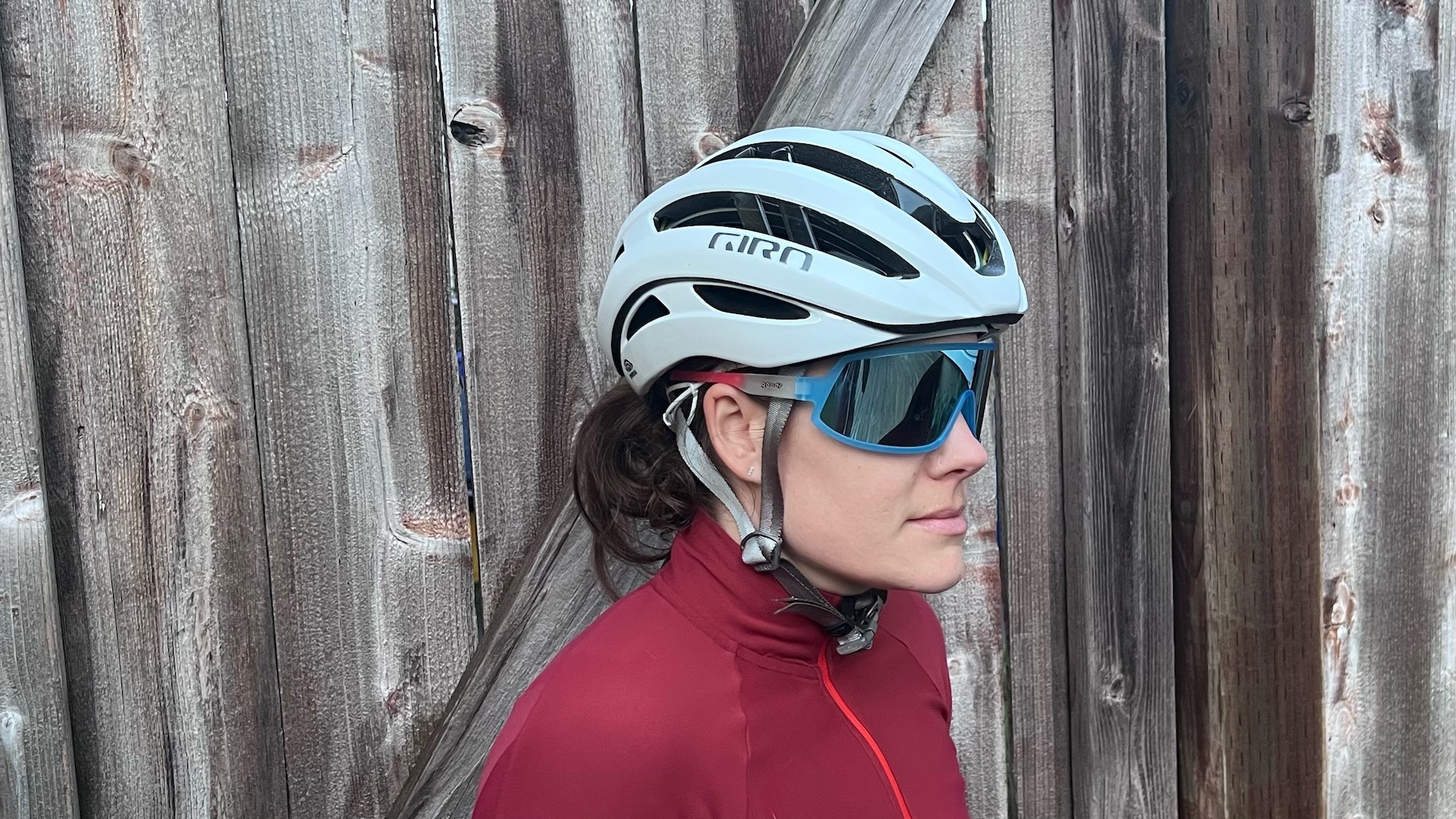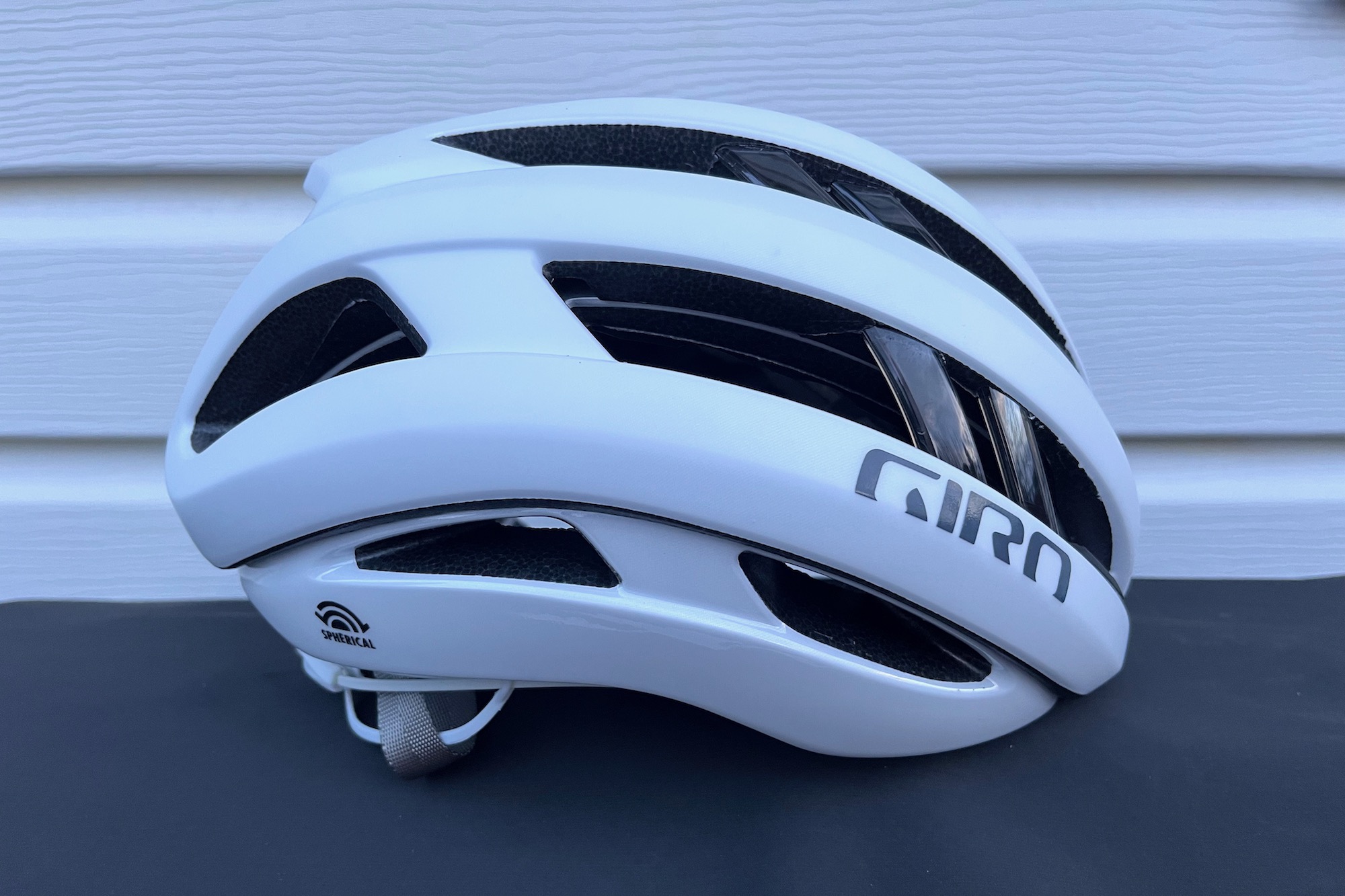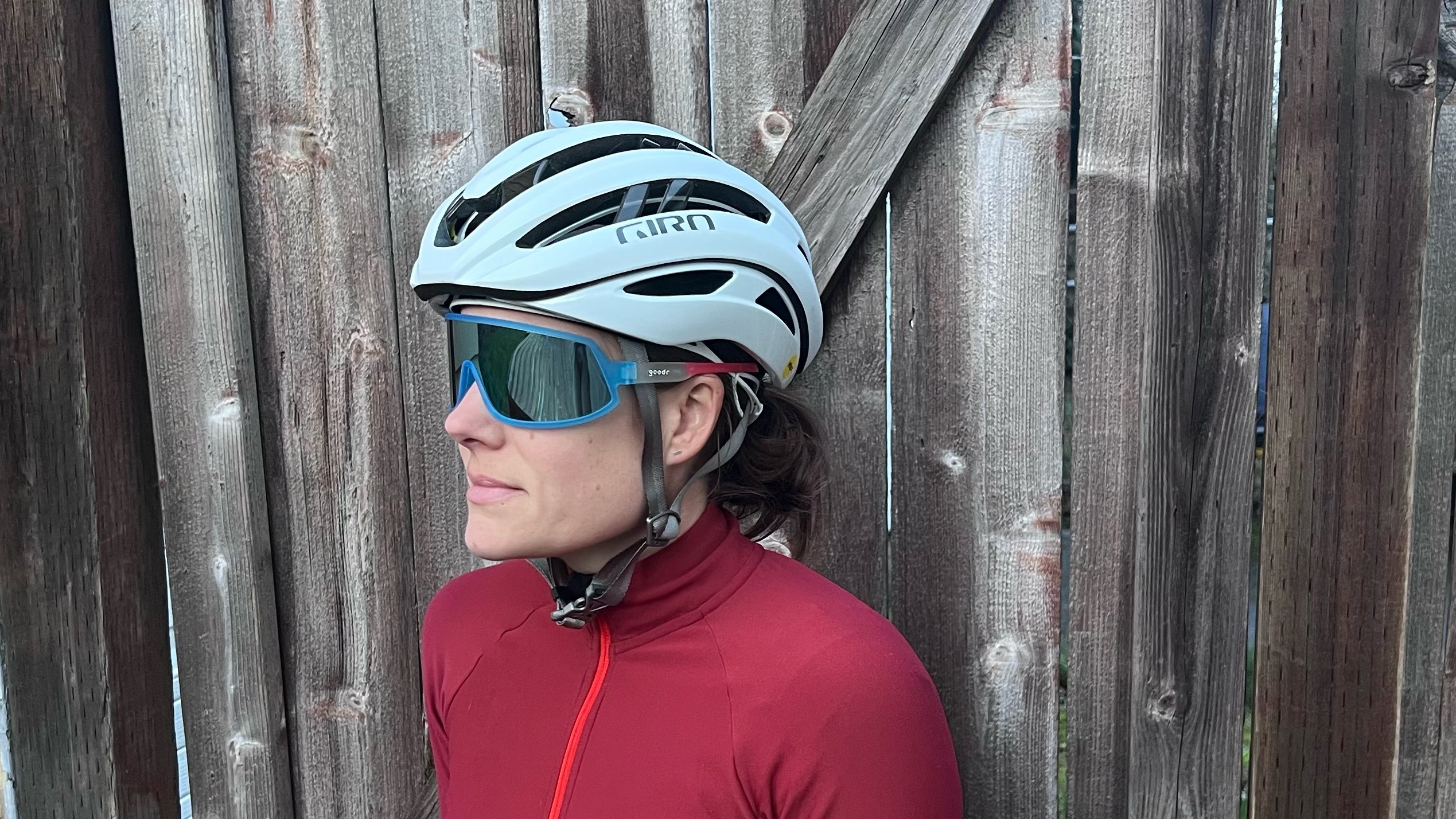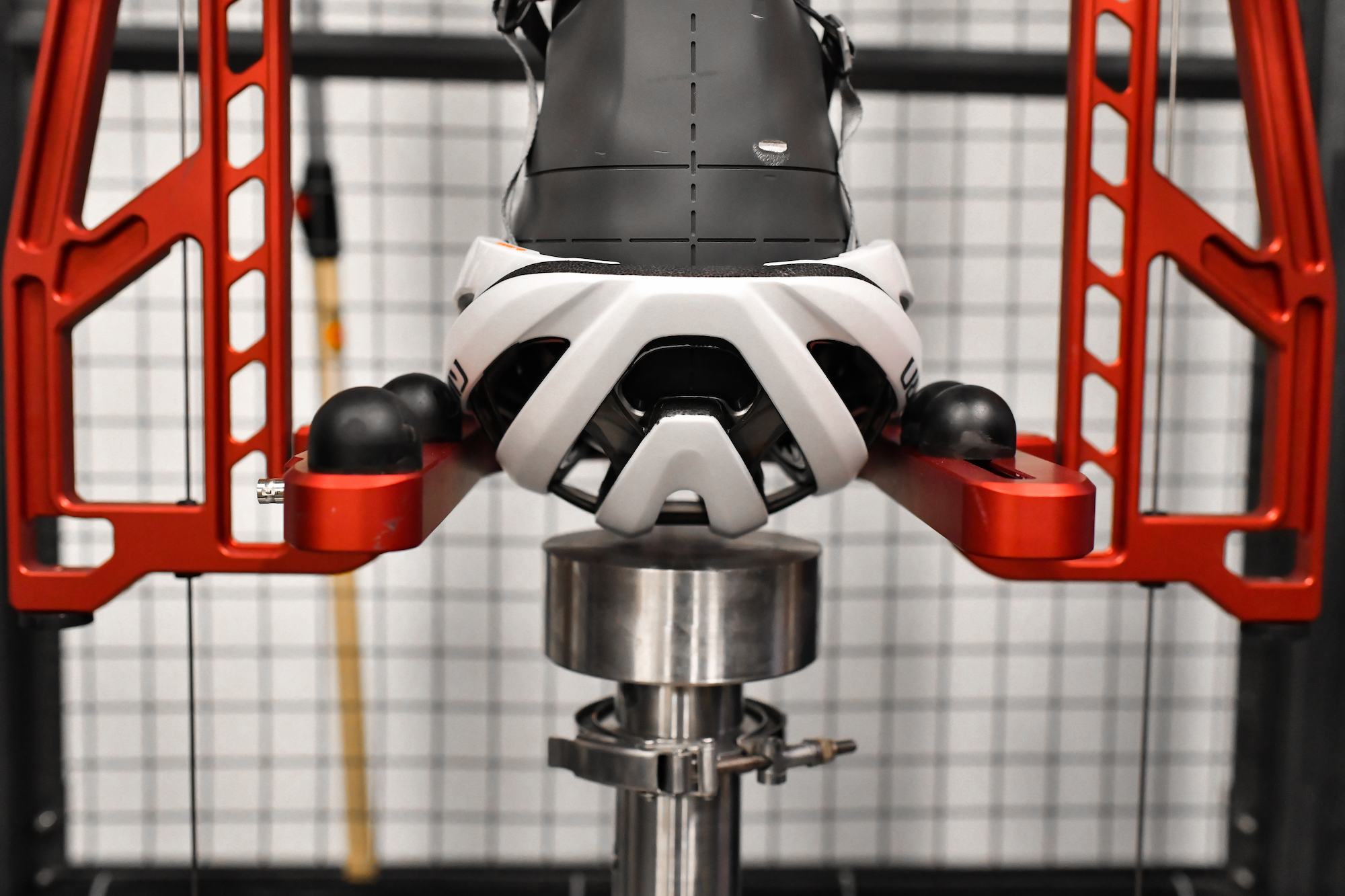The new Giro Aries Spherical reviewed: lighter than the Aether, safest of them all
Backed by a #1 safety rating from Virginia Tech, the new Aries is Giro’s lightest and safest performance helmet yet

Lighter than the Aether, safest of them all. The Giro Aries Spherical carries the highest safety rating ever given to a helmet by independent tester, Virginia Tech, and offers lightweight, comfortable protection in a performance-oriented package.
-
+
lightweight
-
+
ease of mind safety ratings
-
+
MIPS-powered Spherical Technology
-
+
comfortable
-
+
good ventilation
-
-
expensive
You can trust Cycling Weekly.

The bike industry is constantly innovating to make products lighter, faster and more aero. This is no different when it comes to bike helmets, but the increased focus on safety and third-party testing has been a most welcomed trend.
The all-new Giro’s Aries Spherical helmet premiered today still focuses on all the 'lighter', 'cooler, 'faster' superlatives but places safety front and center. The Aries is claimed to be the brand’s lightest and airiest helmet in the Mips’ Spherical Technology line yet but also the safest with a #1 safety rating from the esteemed Virginia Tech University.
This new wind-tunnel tested, WorldTour-level lid unseats the Aether Spherical as Giro's top road offering in terms of performance, innovation as well as price point. Compared to the Aether, the Aries is 2.3% cooler (or, better ventilated), 4% more aerodynamic and 5% lighter.
“The Aries Spherical is like nothing before,” promises Peter Nicholson, Giro Brand Manager. “As cycling helmet gains become incremental, Giro engineers truly make the difference with all the resources at their disposal…We’ve been leading helmet science for almost 40 years, and it’s all led up to a helmet that virtually disappears when you start riding yet manages to receive the best score Virginia Tech has ever given in their rankings of which helmets best reduce the risk of injury.”
Let's have a closer look.
Giro Aries Spherical: features

Spherical Technology powered by MIPS
Rather than being an afterthought, the Aries was designed around the now-prevalent MIPS technology.
MIPS, which stands for Multi-directional Impact Protection System, is designed to reduce the rotational forces transferred to the head in the event of a crash. Helmets with MIPS are usually recognizable by a visible —and often yellow— thin plastic cradle inside the helmet.
Giro integrates the MIPS cradle in their own ball-and-socket "Spherical" design which aids in redirecting impact forces in case of a crash. If you've never held a Spherical helmet before, the two parts of the helmet actually move independently, and tangibly, from one another.
By doing away with the thin plastic liner on the inside of the helmet, you'll no longer experience the annoying snagging of your hair or any airflow restriction, which plagued earlier MIPS helmets.
DryCore:
With the Aries, Giro is debuting a new sweat management system it's calling DryCore. This pad technology relies on an internal silicone bead to redirect moisture away from the forehead and eliminate the potential of sweat dripping into the eyes.
Shatter resistance:
Like the Aether, the Aries features Giro's proprietary AURA Reinforcement Arch. These shatter-resistant, translucent reinforcement bridges run throughout the helmet, providing structural integrity without adding much weight. My medium test helmet came in at just 270 grams.
A more compact design for streamlined speed:
While at first glance the Aries likens the well-loved Giro Synthe or Aether, the Aries is actually more compact than previous models. Designers reduced the frontal surface area to reduce drag while adding beveled edges and internal channeling to improve the helmet's aerodynamics, which are said to be 4% better than the Aether Spherical.
Coolest:
The aerodynamic improvements did not come at the expensive or airflow however. The Aries features sizable air vents in the front and the rear of the helmet, which are connected via internal channels which direct and speed up the airflow. The Aether was already considered a benchmark in cooling yet the Aries improves on that design by 2.3%, making it better ventilated and ultimately, cooler.
Safest:
All this comes in a package that's Giro's safest helmet yet. More than that, independent authority Virginia Tech gave the Aries its highest safety rating yet, raking it as the number 1 road cycling helmet in reducing risk of injury.
Giro Aries Spherical: Specifications
Price: $300 US / €320 / $499 AUD / £289.99
Colors: White, black, blue, blue-black, harbor blue, carbon red
Sizes: Small (51-55cm); medium (55-59cm); large (59-63cm)
Weight: 270 grams in size medium
Website: www.giro.com
Giro Aries Spherical: Ride Test

Out of the box, the Aries Spherical is instantly identifiable as a Giro helmet. The design: sleek and low-profile yet somewhat rounded, likens the preceding Aether Spherical and Synthe MIPS models.
The Synthe remains one of my favorite helmet designs of all time and I wear one on heavy rotation. The Aries, however, could very well take its place.
The profile of the Aries is ever so slightly taller than Synthe yet more compact while still providing good, low coverage in the rear of the head.
The Roc Loc® 5+ Air fit system closure, carried over from previous models, is reliable and easy to adjust and, for those of you with long hair, has enough of a gap to pull a pony tail through. I have found, however, that for wearing a pony tail, it's best to size up in Giro helmets. I therefore tend to wear a size Medium in Giro instead of small.
The heart of winter isn't ideal when it comes to testing the coolness factor of a helmet, but I can tell you that the Aries Spherical sports an impressive 24 vents in total and stands out in its unobtrusive comfort. I felt no pressure spots and encountered no sweaty brows or hair snagging. In fact, I didn't feel much of anything, which is exactly what I want out of a good helmet.
I like the simple, no-fuss buckle closure and the wide, adjustable chin straps. The straps are, however, quite long and I usually end up cutting off the surplus fabric and singing the edges.
Giro Aries Spherical: Value and conclusion

For me, the Aries Spherical ticks all the boxes: a comfortable, lightweight protection with superior safety ratings in a no-fuss, performance-oriented package.
Superficial as it may sound, I've also always found Giro's aesthetics quite stylish — as far as cycling helmets go anyway. The compact, low-profile design and fit suit my face shape better than most other helmets on the market.
Helmet fit is, of course, a personal thing but if you've liked Giro helmets in the past, the Aries Spherical will suit you well.
The Aries Spherical is a superb helmet but it does have a glaring downside: the price tag.
The Aries boasts top-shelf performance and safety but also a top-shelf retail price of $300/ £289.99. With it, the Aries Spherical is comparable in price only to the Specialized Prevail III or Kask Protone Icon. Among these choices, the helmet's weight, performance and safety features are similar as well. It's only the fit, aesthetics and personal preference that sets them apart.
You could save yourself $50 to $100 by opting for Giro's Synthe MIPS II, Aether Spherical or Helios Spherical helmets instead, but if you're looking for top performance and comfort, the Aries Spherical does not disappoint.

Thank you for reading 20 articles this month* Join now for unlimited access
Enjoy your first month for just £1 / $1 / €1
*Read 5 free articles per month without a subscription

Join now for unlimited access
Try first month for just £1 / $1 / €1
Get The Leadout Newsletter
The latest race content, interviews, features, reviews and expert buying guides, direct to your inbox!

Cycling Weekly's North American Editor, Anne-Marije Rook is old school. She holds a degree in journalism and started out as a newspaper reporter — in print! She can even be seen bringing a pen and notepad to the press conference.
Originally from the Netherlands, she grew up a bike commuter and didn't find bike racing until her early twenties when living in Seattle, Washington. Strengthened by the many miles spent darting around Seattle's hilly streets on a steel single speed, Rook's progression in the sport was a quick one. As she competed at the elite level, her journalism career followed, and soon, she became a full-time cycling journalist. She's now been a journalist for two decades, including 12 years in cycling.
-
 'I'll take a top 10, that's alright in the end' - Fred Wright finishes best of British at Paris-Roubaix
'I'll take a top 10, that's alright in the end' - Fred Wright finishes best of British at Paris-RoubaixBahrain-Victorious rider came back from a mechanical on the Arenberg to place ninth
By Adam Becket Published
-
 'This is the furthest ride I've actually ever done' - Matthew Brennan lights up Paris-Roubaix at 19 years old
'This is the furthest ride I've actually ever done' - Matthew Brennan lights up Paris-Roubaix at 19 years oldThe day's youngest rider reflects on 'killer' Monument debut
By Tom Davidson Published
-
 'One of the hardest races I've ever done in my life' - Tadej Pogačar finishes runner-up on Paris-Roubaix debut after crash
'One of the hardest races I've ever done in my life' - Tadej Pogačar finishes runner-up on Paris-Roubaix debut after crashWorld champion reacts to 'extremely hard' battle with Mathieu van der Poel
By Tom Davidson Published